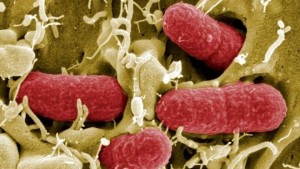The U.S. Center for Disease Control and Prevention reports:
- CDC, multiple states, and the U.S. Food and Drug Administration(FDA) are investigating a multistate outbreak of SalmonellaPoona infections.
 341 people infected with the outbreak strains of Salmonella Poona have been reported from 30 states, an increase of 56 cases since the last update on September 4.
341 people infected with the outbreak strains of Salmonella Poona have been reported from 30 states, an increase of 56 cases since the last update on September 4. - 70 ill people have been hospitalized, and two deaths have been reported from California (1) and Texas (1).
- 53% of ill people are children younger than 18 years.
- Epidemiologic, laboratory, and traceback investigations have identified imported cucumbers from Mexico and distributed by Andrew & Williamson Fresh Produce as a likely source of the infections in this outbreak.
- 91 (68%) of 134 people interviewed reported eating cucumbers in the week before their illness began.
- Eleven illness clusters have been identified in seven states. In all of these clusters, interviews found that cucumbers were a food item eaten in common by ill people.
- Arizona, California, Montana, and Nevada isolated Salmonellafrom samples of cucumbers collected from various locations that were distributed by Andrew & Williamson Fresh Produce.
- On September 4, 2015, Andrew & Williamson Fresh Produce voluntarily recalledall cucumbers sold under the “Limited Edition” brand label during the period from August 1, 2015 through September 3, 2015 because they may be contaminated with Salmonella.
- The type of cucumber is often referred to as a “slicer” or “American” cucumber and is dark green in color. Typical length is 7 to 10 inches.
- In retail locations the cucumbers are typically sold in a bulk display without any individual packaging or plastic wrapping.
- A photo of the packing carton is available.
- Limited Edition cucumbers were distributed in the states of Alaska, Arizona, Arkansas, California, Colorado, Florida, Idaho, Illinois, Kansas, Kentucky, Louisiana, Minnesota, Mississippi, Montana, Nevada, New Jersey, New Mexico, Oklahoma, Oregon, South Carolina, Texas, and Utah. Further distribution to other states may have occurred.
- Consumers should not eat, restaurants should not serve, and retailers should not sell recalled cucumbers.
- If you aren’t sure if your cucumbers were recalled, ask the place of purchase or your supplier. When in doubt, don’t eat, sell, or serve them and throw them out.
- CDC’s National Antimicrobial Resistance Monitoring Systemlaboratory is conducting antibiotic resistance testing on clinical isolates collected from ill people infected with the outbreak strains; results will be reported when they become available.
- This investigation is ongoing. CDC will provide updates when more information is available.
Case Count Update
Since the last update on September 4, 2015, 56 new ill people have been reported from Alaska (1), Arizona (6), California (21), Hawaii (1), Illinois (1), Louisiana (1), Missouri (1), New Mexico (3), Oklahoma (3), Oregon (5), Pennsylvania (2), South Carolina (1), Texas (9), and Washington (1).
As of September 8, 2015, a total of 341 people infected with the outbreak strains of Salmonella Poona have been reported from 30 states. The number of ill people reported from each state is as follows: Alaska (9), Arizona (66), Arkansas (6), California (72), Colorado (14), Hawaii (1), Idaho (8), Illinois (6), Kansas (1), Kentucky (1), Louisiana (4), Minnesota (12), Missouri (8), Montana (10), Nebraska (2), Nevada (7), New Mexico (18), New York (4), North Dakota (1), Ohio (2), Oklahoma (8), Oregon (8), Pennsylvania (2), South Carolina (7), Texas (18), Utah (30), Virginia (1), Washington (10), Wisconsin (2), and Wyoming (3).
Among people for whom information is available, illnesses started on dates ranging from July 3, 2015 to August 30, 2015. Ill people range in age from less than 1 year to 99, with a median age of 15. Fifty-three percent of ill people are children younger than 18 years. Fifty-eight percent of ill people are female. Among 214 people with available information, 70 (33%) report being hospitalized. Two deaths have been reported from California (1) and Texas (1).
Illnesses that occurred after August 16, 2015 might not be reported yet due to the time it takes between when a person becomes ill and when the illness is reported. This takes an average of 2 to 4 weeks.












